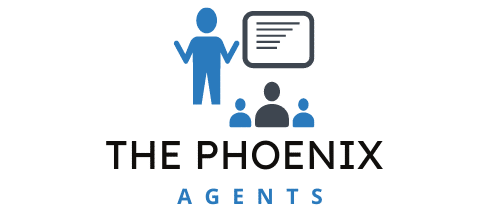How to Apply Differential Learning in Sports Practice for Skill Diversification?

When it comes to training in sports, the traditional approach often emphasizes repetition and precision. While these methods have their merit, a new and innovative learning model called differential learning is making waves in the sports education sector. Rooted in the concept that variation and creativity in movement can lead to improved motor skills and performance, differential learning encourages athletes to explore a range of movements within their sports practice.
As scholars of sports education, you may be intrigued by the potential of differential learning. If so, this article provides a comprehensive guide on how to integrate it into your training program. We will discuss the theoretical aspects of this approach, the benefits for athletes, and practical steps to apply it in a sports context.
A lire en complément : What Are the Latest Advances in Social Psychology for Team Dynamics in Sports?
Understanding Differential Learning
Differential learning is an approach that encourages a more holistic understanding of physical movements and motor skills. Unlike traditional training methods, which often involve repeating a specific movement until it’s perfected, differential learning advocates for variation in movements.
This approach is based on the premise that the human motor system is highly adaptable and thrives on unpredictability. It suggests that by introducing a variety of movements, athletes can improve their adaptability, creativity, and overall performance. Differential learning embraces error and variation as a critical part of learning, reshaping the way we view mistakes in sports practice.
Avez-vous vu cela : Can Augmented Reality Improve Training for Precision Sports like Snooker?
According to a study on differential learning in sports, published on Google Scholar, this method has been found to enhance motor skill retention and adaptability. Essentially, this means that athletes are not only able to learn new skills more effectively but are also better at adapting these skills to different situations.
The Benefits of Differential Learning in Sports
Differential learning can offer several benefits in sports training. Primarily, it aids in the diversification of skills, fostering creativity, adaptability, and resilience in athletes.
For instance, imagine a basketball player who has been trained to perform a specific dribble. In a game situation, if they encounter an impediment that prevents them from executing this dribble as practiced, they might struggle to react effectively. However, if the same player has been trained using differential learning, they would likely have a broader repertoire of movements to draw from, enabling them to adapt quickly and efficiently.
Moreover, differential learning can also reduce the risk of overuse injuries. In traditional training, the continual repetition of specific movements can lead to physical stress and strain, potentially resulting in injury. In contrast, the variability in movements during differential learning can distribute the physical load more evenly across different muscle groups, reducing the risk of injury.
Implementing a Differential Learning Approach
Now that you are aware of the benefits of differential learning let’s explore how you can integrate it into your sports training regime.
Start with introducing small variations in your training drills. For instance, if you are teaching a child how to kick a soccer ball, instead of focusing on perfecting a single kick, encourage them to explore different types of kicks. They could try kicking the ball with different parts of their foot, at different angles, or with varying levels of force.
Next, consider adding unpredictability to your training sessions. Randomize the order of your drills, introduce surprise elements, or modify the training environment. This unpredictability can stimulate the athletes’ creative thinking and enhance their adaptability.
Incorporating Technology in Differential Learning
Incorporating technology in your differential learning approach can make the process more engaging and effective. For example, using video analysis tools, you can record the athletes’ movements during sessions. This footage can then be reviewed to identify patterns, strengths, weaknesses, and areas for improvement.
Another innovative tool you can use is motion capture technology. This can provide a detailed analysis of an athlete’s movements, helping to understand their unique motor skills better. This data can then be used to develop personalized training programs that incorporate a wide range of movements.
It’s also worth noting that many of these technologies are becoming increasingly accessible. Platforms like Google Scholar offer a wealth of research on the use of technology in sports training, providing further insights into effective practices and the latest innovations.
Evaluating the Effectiveness of Differential Learning
Finally, it’s crucial to evaluate the effectiveness of your differential learning approach. This can be done through regular testing and performance evaluations. You could conduct skill tests to measure improvements in athletes’ motor skills, or use game situations to assess their adaptability.
Sports education is constantly evolving, and as scholars, it’s vital to stay abreast of new theories and methods. By embracing differential learning and utilizing it in your training, you can not only diversify your athletes’ skill sets but also equip them with the adaptability and creativity necessary to excel in the dynamic world of sports.
Harnessing Differential Learning in Team Sports
Casting light on the practical application of differential learning, team sports offer a prime example. Often characterized by unpredictability and rapid decision-making, team sports can significantly benefit from this approach. Be it soccer, basketball, or volleyball, differential learning can enhance the players’ physical literacy, creative thinking, and adaptability.
Incorporating differential learning in team sports can be achieved by diversifying training drills and emphasizing the unpredictability of game situations. For example, during a soccer practice, instead of a repetitive drill of passing the ball, coaches can introduce variations. These could include passing the ball with either foot, at different speeds and trajectories, and in response to changing game scenarios.
Similarly, the contextual interference effect – a phenomenon where the learning of multiple skills in a random order enhances motor learning – aligns well with the principles of differential learning. By varying the sequence of drills and introducing intermittent challenges, coaches can foster a more dynamic learning environment.
Furthermore, differential learning can be applied during pre and post-tests to evaluate players’ adaptability. In a pre-post test design, the intervention (differential learning) is applied between two measurement points. These tests are particularly effective in measuring the gains from the training program, providing valuable insights for further refinement.
Advancements in research and technology have made it easier to access relevant studies on differential learning and team sports. For instance, Google Scholar, PubMed, and Crossref offer numerous free articles that delve deeper into the subject. Scholars and coaches can benefit from these resources to better understand and implement differential learning strategies in team sports.
Conclusion: Embracing Change and Evolution in Sports Education
In conclusion, differential learning represents a significant shift from traditional sports training methods. By encouraging variation and creativity in movements, it fosters a more holistic understanding of motor skills. Moreover, it cultivates adaptability, a crucial trait for athletes in the rapidly changing and unpredictable world of sports.
Differential learning is not merely a theoretical concept. Its practical applications in sports training, particularly in team sports, underline its potential for enhancing physical literacy and performance. The use of technology, such as video analysis and motion capture, can further augment the effectiveness of this approach.
While measuring the impact of differential learning through pre and post-tests, it’s equally important to remember that sports education is an evolving field. As scholars and educators, staying abreast of new theories, methods, and research is essential. Platforms like Google Scholar, PubMed, and Crossref can be valuable resources in this endeavor.
Embracing differential learning does not mean discarding traditional training methods altogether. Instead, it’s about integrating new insights and approaches into existing practices, for a more diverse, adaptable, and resilient training program. Remember, in sports as in life, it’s not about eliminating errors but learning from them. And that’s the essence of differential learning.
